India is at the learning stage for many of the complex technologies required to create a BMD system. DRDO’s record in producing weapon systems has not been encouraging as exemplified by the delayed induction of the LCA, the failure of the Arjun MBT and the virtual rejection of the INSAS rifle by the Indian Army. But leapfrogging on the success achieved by scientists in space-related technologies, DRDO has excelled in producing potent ballistic missiles that have enhanced India’s strategic options. Perhaps it would be wiser to channel the nation’s resources to an area of strength, rather than to experimenting in a hugely expensive sector where even the achievement of success is not a guarantor of increased security. Many other questions also arise. Which regions or entities will be protected by the BMD system? Will the enemy attack ‘protected areas’ with larger numbers of ballistic missiles to saturate the BMD? How many systems will be required? Will the systems be manned round-the-clock? Will India be able to bear the very high sustenance costs of the BMD system? Will sensors be positioned in space for enhanced early warning?
Launch of Agni-V
Although the successful launch of Agni-V Surface-to-Surface Missile (SSM) on April 19, 2012, was applauded by the nation, it has had several downstream effects. India’s Defence Research & Development Organisation (DRDO) claimed that it was a 5,000-km missile to counter the growing capability of neighbours inimical to India. Chinese experts claimed that the Agni-V was an ICBM with a range of 8,000 km. Pakistan responded with the launch of its own missile that could reach any target in India. The DRDO Chief claimed that the Agni-V could be tweaked to be employed as an Anti-Satellite (ASAT) missile also, though officially India has opposed the weaponisation of space. A variant of Agni-V could emerge as a Multiple Independently Targeted Re-entry Vehicle (MIRV) warhead, an innovation that would boost India’s strategic deterrence capability.
A variant of Agni-V could emerge as an innovation that would boost India’s strategic deterrence capability.
Threat from China and Pakistan
China is ahead of India in missile technology and capability with a large inventory of Short Range Ballistic Missiles (SRBM) having a reach of under 1,000 km, Medium Range Ballistic Missiles (MRBM), with range between 1,000 and 3,000 km, Intermediate Range Ballistic Missiles (IRBM) with range from 3,000 to 5,500 km and Intercontinental Range Ballistic Missiles (ICBM) that can strike targets beyond 5,500 km. China’s DF-5 silo-based ICBM has a range of 13,000 km. The DF-31 and DF-31A with ranges of 7,200 and 11.200 km respectively, can be silo-based or mobile. Pakistan, which clandestinely acquired missile technology from North Korea and China, began with the tactical missile HATF-1 with a payload of 500 kg and range of 80 km. The latest nuclear-capable GHAURI-3 and SHAHEEN-3 IRBMs have ranges in excess of 3,500km carrying over 1000 kg payloads. Both these are being developed and have been tested frequently. India’s stated policy of ‘No First Use’ (NFU) renders it vulnerable to nuclear blackmail.
Efficacy of Ballistic Missile Defence
Given the evolving nuclear scenario, India opted to develop a Ballistic Missile Defence (BMD) system. On May 07, 2012, the DRDO announced that a ‘missile defence shield’ has been developed and can be put in place at short notice at any two selected locations. The announcement went on to state that the long-range tracking radars, real-time data-link and mission control systems needed for the operationalisation of the BMD have been ‘realised’. This system can tackle incoming ballistic missiles of 2,000 km range. Phase II of the project to be completed by 2016, would have improved range.
The BMD is a complex system that involves high levels of technology and is resource intensive. However, as no BMD can assure 100 per cent interception and destruction of incoming missiles, the system fails to provide complete and foolproof protection against ballistic missile attack. During the first Gulf War, US Patriot systems were unable to shoot down most Iraqi Scuds. Success rate of Patriot Anti-Ballistic Missiles (ABMs) was reported to be under ten per cent even against Scuds that were of outdated technology. Modern ballistic missiles are likely to be far less vulnerable to BMD systems. In the final analysis, there is no foolproof defence against a nuclear attack mounted through ballistic missiles.
The sub-orbital trajectory a ballistic missile follows to deliver its warhead to the target comprises three segments: the powered initial phase, the free flight phase that constitutes most of the flight time and the re-entry phase where it re-enters the Earth’s atmosphere. Ballistic missiles can be launched from fixed sites, mobile launchers, aircraft, ships and submarines. The powered phase can last from a few seconds to several minutes depending on the range to be achieved and the weight of the warhead. The initial thrust is provided by a single or multi-stage rocket. The missile usually attains a high sub-orbital trajectory entering free flight in space, the highest point for an ICBM being 1,200 km. In the re-entry phase, atmospheric drag plays a significant part in the missile’s trajectory right till impact. Ballistic missiles are characteristically easy to detect and track at launch but the hypersonic terminal phase presents a serious problem for defensive weapon systems. Interception in the terminal phase can be described as ‘hitting a bullet with another bullet’, and the degree of difficulty of interception increases with the range and terminal velocity of the missile. Killing a Scud is easier than killing an IRBM, and killing an IRBM in turn is easier than killing an ICBM. The interception technology used has varied over time. In the 1960s, missile defence against ICBMs was based on nuclear warheads. However, in recent times, these have been replaced by non-nuclear kinetic warheads. Directed-energy weapons such as lasers are also being employed though this technology is in a nascent stage of development.
India’s stated policy of ‘No First Use’ (NFU) renders it vulnerable to nuclear blackmail.
Challenges of Interception
Missile defence can be divided into categories based on characteristics such as type and range of missile to be intercepted, the trajectory phase where the intercept occurs and whether interception occurs inside or outside the Earth’s atmosphere. Ballistic missiles can be intercepted during the boost phase, mid-course phase or terminal phase. Boost phase intercept is the easiest from a detection, tracking and kinematic perspective. The exhaust plume can be seen from orbit and hundreds of kilometres away in the air. Climbing at supersonic speed early in the boost phase, the missile has all its stages attached presenting a large radar target. The difficulty with boost phase intercept is that the defending aircraft, be it equipped with an interceptor missile or Directed Energy Weapon (DEW), must be near enough to the launcher to effect a timely shot. This would entail extended ‘patrolling’ by defending fighters. Mid-course phase intercepts are probably the most challenging from a detection and tracking perspective, as the missile is at the peak of its trajectory and having shed booster stages, is a small and cool radar target. Kinematically, mid-course phase intercepts are demanding in terms of altitude, even if the missile’s speed is comparatively low as it flies across the top of the ballistic arc. In the terminal phase, the delivery vehicle produces a prominent trail and heat signature as coatings melt and vaporise during re-entry. The ionisation plume thus generated, provides a radar signature much larger than the vehicle itself, facilitating accurate tracking of the warhead. The principal tracking challenge is discrimination between the re-entry vehicle and debris or countermeasures re-entering concurrently. The latter proved to be a major impediment for Patriot intercepts of the Scuds in 1991.
Missile defence can take place either inside (endo-atmospheric) or outside (exo-atmospheric) the Earth’s atmosphere. The trajectory of most ballistic missiles lies inside and outside the Earth’s atmosphere and interception is possible in both segments. There are advantages and disadvantages to either intercept technique. Endo-atmospheric interceptions require lighter ABMs with inherently greater mobility. As range is limited, ABMs need to deployed in larger numbers. Decision time is considerably reduced and there is danger of nuclear fallout over own territory. Exo-atmospheric interceptions provide greater decision time and larger areas can be defended by fewer ABMs. However the ABMs would be heavier and less mobile.
The BMD is a complex system that involves high levels of technology and is resource intensive.
A typical engagement sequence of a tactical ballistic missile would be as under:-
- Detection of an incoming missile is by radar which distinguishes a missile from satellite or aircraft, reviews its speed, altitude, behaviour pattern and radar cross-section. If the data is consistent with the parameters loaded in the system, the missile appears on the screen at the Mission Control Centre (MCC).
- The control officer reviews the target parameters and orders the Launch Control Centres (LCC) to switch the ABMs to ‘operational’ mode from ‘stand-by’ mode. Computers continuously track and calculate firing parameters.
- The LCC orders the launch vehicle with the highest ‘kill’ probability to fire. Two missiles are fired at pre-determined intervals to enhance kill probability.
- The fire control radar continues to track the target while simultaneously updating the outbound missiles with intercept information.
- The active guidance radar onboard acquires the incoming ballistic missile and manoeuvres the ABM for intercept.
- The attitude control motors on the ABM are fired for precise alignment.
- The ABM navigates to impact with the warhead of the incoming ballistic missile and detonate destroying the hostile target in the process.
- The second ABM locates debris that may be a warhead and destroys it in a similar manner.
The Indian BMD programme is structured as a two-tiered system with Prithvi Air Defence (PAD) for high altitude interception and Advanced Air Defence (AAD) for low altitude interception. Developed to intercept incoming exo-atmospheric ballistic missiles, the PAD is a two-stage missile with a maximum interception altitude of 80 km. The first stage is a solid-fuel motor while the second stage is propelled by liquid fuel. It has manoeuvre thrusters which can generate lateral acceleration of over five G at altitudes of 50 km. Guidance is provided by an inertial navigation system with mid-course updates from the Long-Range Tracking Radar (LRTR) and active radar homing in the terminal phase. Called the Pradyumna, PAD has the capability to engage the 300 to 2,000 km class of ballistic missiles at speeds of Mach 5. LRTR, the target acquisition and fire control radar for the PAD missile, is an active phased array radar with capability to track 200 targets at a range of 600 km. Swordfish is an Indian LRTR specifically developed to counter ballistic missile threat and is a part of India’s ballistic missile programme. The first test of this radar in March 2009 validated the capabilities of the indigenously developed Swordfish which is an acknowledged derivative of the Israeli Green Pine long-range radar, a critical component of Israel’s Arrow missile defence system. However, it differs from the Israeli system as it employs Indian transmit-receive modules, signal processing computers and power supply. It is also more powerful than the Green Pine system and was developed to meet India’s specific BMD needs. It can guide exo-atmospheric missiles to intercept targets at an altitude over 80 km from the Earth. Currently, the Swordfish LRTR has a range of 600 to 800 km and can spot objects two inches in diameter. DRDO plans to upgrade the range to 1,500 km.
Testing BMD Systems
The Prithvi Air Defence Exercise (PADE) was conducted in November 2006, in which a PAD missile successfully intercepted a modified Prithvi-II at an altitude of 50 km. The Prithvi-II ballistic missile was modified successfully to mimic the trajectory of M-11 missiles. DRDO plans to test the anti-ballistic shield against missiles with a range of 1,500 km. The test will be conducted with a modified Prithvi missile launched from a ship and the anti-ballistic missile launched from Wheeler Island. The interception of the target missile will take place at an altitude of approximately 80 km. On March 6, 2009 DRDO, carried out a second successful test of the PAD interceptor missile. The target used was ship-launched Dhanush missile which followed the trajectory of a missile with a range of 1,500 km. The target was tracked by Swordfish LRTR radar and destroyed by the PAD at 75 km altitude.
The Advanced Air Defence (AAD) system is a single-stage, solid-fuel missile ABM designed to intercept incoming endo-atmospheric ballistic missiles at an altitude of 30 km. Guidance is similar to that of PAD with an inertial navigation system, mid-course updates from ground-based radar and active radar homing in the terminal phase. It is 7.5 m tall, weighs around 1.2 tonnes and has a diameter of less than 0.5 m.
On December 6, 2007, the AAD successfully intercepted a modified Prithvi-II missile acting as an incoming hostile ballistic missile. The endo-atmospheric interception was carried out at an altitude of 15 km. The interceptor and all the elements performed in a copybook fashion validating the endo-atmospheric layer of the defence system. After two successful interceptor missile tests, scientists were of the view that the AAD missile could be modified into a new extended range (150 km) Surface-to-Air Missile that could be possibly named as ‘Ashvin’.
On March 15, 2010, AAD interceptor missile test from the Orissa coast was aborted as the target, a Prithvi missile fired from a mobile launcher from the Integrated Test Range Complex-3 at Chandipur-on-Sea, deviated from its path and plunged into the sea. The AAD missile was to intercept the target at an altitude of 15 to 20 km over the sea. On July 26, 2010, the AAD was successfully test-fired from the Integrated Test Range (ITR) at Wheeler Island.
On March 6, 2011, India successfully test-fired from the Orissa coast its interceptor missile which destroyed a ‘hostile’ target ballistic missile, a modified Prithvi, at an altitude of 16 km over the Bay of Bengal. The interceptor AAD missile positioned at Wheeler Island, about 70 km across sea from Chandipur, received signals from tracking radars installed along the coastline as it travelled through the sky at a speed of Mach 4.5 to destroy the target. As the trial was aimed at achieving the desired result with precision, the interceptor missile had its own mobile launcher, secure data-link for interception, independent tracking and homing capabilities and sophisticated radars. On February 10, 2012, AAD was again successfully test-fired from Wheeler Island. Though successful, these trials were conducted under laboratory conditions.
The Phase 2 missile defence system will be based on the AD-1 and AD-2 interceptor missiles that are currently under development. Phase 2 interceptors will be hypersonic with speeds of Mach 6 to 7. Missiles will have lesser time to intercept. Guidance systems have to be far more energetic and capable of quicker response. Ground testing of the AD-1 was to begin in 2011 and AD-2 in 2012, but there have been no reports of any tests so far. These interceptors would be capable of intercepting missiles that have ranges greater than 5,000 km, which follow a distinctly different trajectory than a missile with a range of 2,000 km or less. During their final phase, ICBMs hurtle towards their targets at speeds twice those of IRBMs. The Phase 2 system will match the capability of the Terminal High Altitude Area Defence (THAAD) missiles deployed by the US as part of its missile shield beginning this year. THAAD missiles can intercept ballistic missiles over 200 km away and track targets at ranges in excess of 1,000 km.
Viability of BMD in the Indian Context
DRDO’s success in the field of ballistic missiles is indeed laudable and they have promised much more. But the BMD system is a complex entity and many other components are required to make it operational. The financial and strategic costs also have to be calculated to determine if alternatives to BMDs are available to the country. A comparison with the US BMD system would also be useful. The USA has the most elaborate BMD system being put in place and there is a plan to extend it further into Europe. The US continental system is estimated to have cost about $100 billion from 2002 till date. The Indian system will cost less but the amount involved will be between Rs 50,000 crore to Rs 250,000 crore. However, even this staggering level of expenditure will not guarantee complete protection.
No BMD can assure 100 per cent interception and destruction of incoming missiles.
A viable alternative would be to improve the nation’s strategic nuclear strike capability so that despite NFU, India will have the capacity to absorb a nuclear attack and respond to inflict unacceptable levels of damage on the enemy. Russia’s opposition to the US plan to station ABMs in Eastern Europe is based on altered strategic balance. A similar situation can occur on the sub-continent fuelling the arms race between India and Pakistan.
India is at the learning stage for many of the complex technologies required to create a BMD system. Other countries will be reluctant to share their expertise in this area. DRDO’s record in producing weapon systems has not been encouraging as exemplified by the delayed induction of the LCA, the failure of the Arjun MBT and the virtual rejection of the INSAS rifle by the Indian Army. But leapfrogging on the success achieved by scientists in space-related technologies, DRDO has excelled in producing potent ballistic missiles that have enhanced India’s strategic options. Perhaps it would be wiser to channel the nation’s resources to an area of strength, rather than to experimenting in a hugely expensive sector where even the achievement of success is not a guarantor of increased security. Many other questions also arise. Which regions or entities will be protected by the BMD system? Will the enemy attack ‘protected areas’ with larger numbers of ballistic missiles to saturate the BMD?
How many systems will be required? Will the systems be manned round-the-clock? Will India be able to bear the very high sustenance costs of the BMD system? Will sensors be positioned in space for enhanced early warning?
A cost-benefit analysis needs to be carried out followed by a wider debate on the pros and cons of a BMD system and its viability in the Indian context. The opportunity costs involved must be clearly evaluated even at this stage when the two systems are reportedly ready for induction.
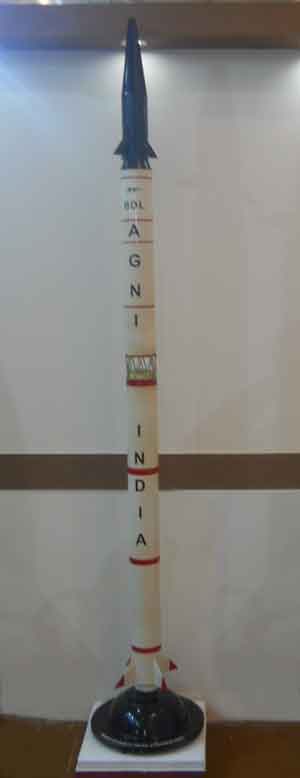
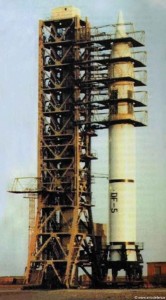

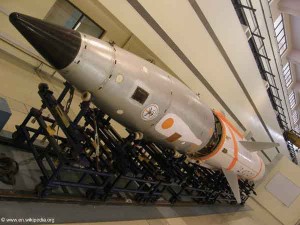
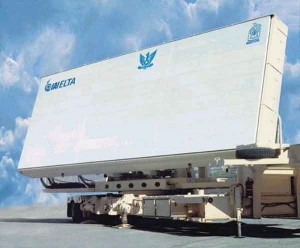
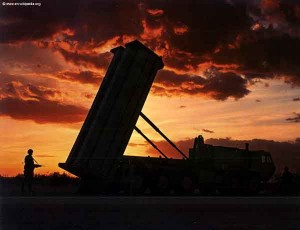
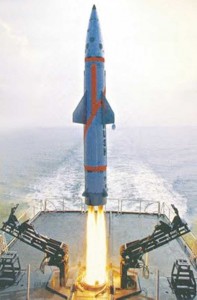

No comments:
Post a Comment